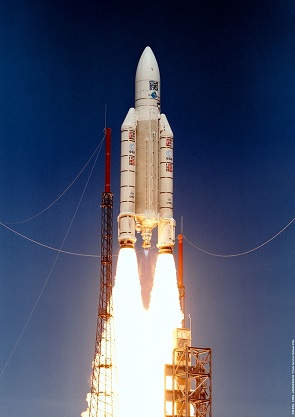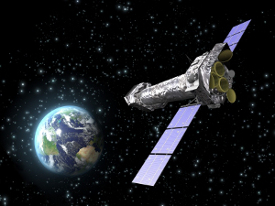XMM-Newton at 20: Taking care of the science operations
9 December 2019
On 10 December 1999, as XMM-Newton launched from Europe's spaceport in Kourou, French Guiana, no one was expecting that the mission would last for two decades. |
| Launch of XMM-Newton. Credit: ESA-CNES-Arianespace / Photo Service Optique CSG |
"Twenty years is a long time. There are only very few spacecraft that operate that long," says Maria Santos-Lleo, ESA's XMM-Newton Science Operations Manager.
Originally funded for just two years, there were a number of possible extensions in place that would take the spacecraft to a hoped-for 10-year mission. To have exceeded that is a testament to the care taken both in the spacecraft's construction by the prime contractor Dornier Satellitensysteme and its operations by ESA's Mission Operations Centre at ESOC in Darmstadt, Germany and its Science Operations Centre at ESA's astronomy centre (ESAC) near Madrid, Spain.
XMM-Newton is in constant contact with Earth. There is only very limited computer memory aboard, so data is instantly downloaded, along with information about the condition of the spacecraft and the science instruments on board. Each command to the spacecraft is uploaded at the moment it is to be performed. The spacecraft is continuously monitored so that protective actions can be taken if some anomaly is detected.
At the beginning of the mission, the operations team also continually monitored space weather and the solar wind – the flow of charged particles given out by the Sun. If it looked like threatening damage to the spacecraft or its instruments, they would take protective measures. Now, however, parts of this monitoring have been automated to free up the operations team for other tasks.
Perhaps the most nerve-wracking moment for the mission came in 2008 when all contact was suddenly lost with the spacecraft.
"It was like it had disappeared," says Santos-Lleo, "We didn't know what was happening. The spacecraft could have exploded. Who knows?"
The flight dynamics engineers at ESOC determined where the spacecraft was supposed to be in its orbit, and astronomers on Earth pointed telescopes at that spot. They saw the spacecraft. It was in one piece, not an exploded cloud of debris.
"This was the first piece of good news. It came about 1–1.5 days after losing contact," says Santos-Lleo, and made them zero-in on what must have happened.
XMM-Newton uses two antennas to communicate with Earth. The loss of contact happened when they sent the signal to switch the transponder to receive or send signals from one to the other. In doing this, something went wrong and neither antenna ended up being used.
They rescued the mission by using NASA's powerful 70-metre antenna at the Goldstone Deep Space Communications Complex, California, to transmit commands. "Suddenly we started to see the signal from the spacecraft again," says Santos-Lleo.
 |
| Artist's impression of XMM-Newton in orbit. Credit: ESA |
Both the operations scientists and engineers, along with the astronomers who regularly use XMM-Newton, now know the spacecraft better than ever. This allows the science and mission operations centres to keep the mission going as it inevitably ages. And it enables astronomers to use the instruments in ever more innovative ways, meaning that demand for the mission continues to grow.
At the last Announcement of Opportunity for observing time, a total of 462 valid proposals were received. This exceeded the amount of observing time available by 7.7 times.
The growing interest in the mission has already enabled a long line of scientific discoveries to be made, and it shows no sign of stopping.
"I think the future is very, very bright for XMM-Newton," says Norbert Schartel, ESA's Project Scientist for XMM-Newton, "We have enough fuel to last until at least 2031, maybe longer, and all other components look very, very good."
If all goes well, the team will be around for the 30th anniversary and beyond.
For further information, please contact:
Norbert Schartel
XMM-Newton Project Scientist
European Space Agency
Email: norbert.schartel![]() sciops.esa.int
sciops.esa.int


